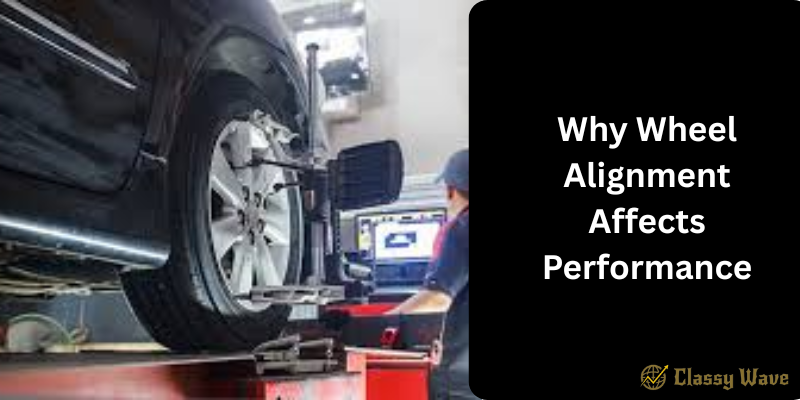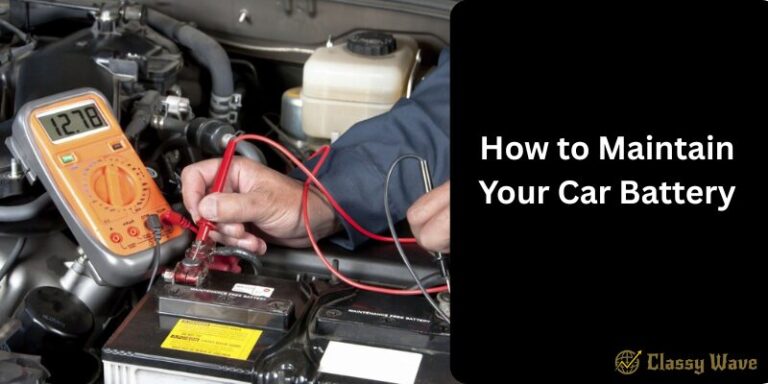Why Wheel Alignment Affects Performance | Classy Wave
Ever noticed your car pulling to one side or your steering wheel shaking while driving? That’s a classic sign of poor wheel alignment. Many drivers underestimate the importance of proper wheel alignment, thinking it’s just about keeping the car straight. In reality, it plays a major role in your car’s overall performance, safety, and fuel efficiency.
Let’s explore why wheel alignment affects performance and how regular maintenance can keep your vehicle running smoothly.
What is Wheel Alignment?
Wheel alignment refers to adjusting the angles of your car’s wheels so they meet the manufacturer’s specifications. This ensures that your tires make proper contact with the road surface, providing better control and even tire wear.
There are three main aspects of wheel alignment:
- Camber: The inward or outward tilt of the tires when viewed from the front.
- Toe: The direction the tires point in relation to the car’s centerline.
- Caster: The angle of the steering axis when viewed from the side of the vehicle.
Even small misalignments in these angles can have a big impact on how your car performs.
How Poor Wheel Alignment Affects Performance
1. Reduced Fuel Efficiency
When your wheels are misaligned, they create resistance, causing your engine to work harder to move the car forward. This extra effort burns more fuel. Over time, that means you’re paying more at the pump — all because your wheels aren’t pointing in the right direction.
2. Uneven Tire Wear
Misaligned wheels cause uneven pressure on your tires, leading to premature wear. You might notice one side of the tire wearing out faster than the other. Uneven tire wear not only shortens tire life but also reduces grip and handling performance, making your ride less safe.
3. Poor Handling and Stability
If your steering feels “off” or your car drifts to one side, misalignment is likely the culprit. This can make your vehicle harder to control, especially at higher speeds or in bad weather. Proper alignment ensures that your steering is responsive, predictable, and stable.
4. Increased Braking Distance
A misaligned vehicle doesn’t distribute braking force evenly across all tires. This means your car might take longer to stop, especially in emergency situations. Wheel alignment helps ensure balanced braking performance and keeps you safer on the road.
5. Extra Strain on Suspension Components
When your wheels aren’t properly aligned, your suspension system takes on additional stress. Over time, this can lead to worn-out shocks, struts, and other suspension parts, resulting in expensive repairs. Proper alignment keeps your suspension working efficiently and extends its lifespan.
How to Know if Your Car Needs Wheel Alignment
Here are some common signs that your car might be due for an alignment check:
- Your steering wheel isn’t centered while driving straight.
- The car drifts to one side.
- Uneven or rapid tire wear.
- Vibrations in the steering wheel.
- Tires squeal when turning.
If you notice any of these symptoms, it’s time to visit a professional mechanic.
Benefits of Proper Wheel Alignment
Keeping your wheels properly aligned brings a lot of advantages beyond smoother driving:
- Better fuel economy — reduced rolling resistance saves gas.
- Longer tire life — even wear means fewer replacements.
- Improved handling — more precise steering and control.
- Enhanced safety — balanced braking and better traction.
- Smoother ride — no vibrations or pulling to one side.
In short, proper wheel alignment keeps your vehicle efficient, reliable, and comfortable.
How Often Should You Get Wheel Alignment?
Experts recommend getting your wheel alignment checked every 6 months or 10,000 kilometers, whichever comes first. However, you may need it sooner if:
- You’ve hit a pothole or curb.
- You’ve replaced tires or suspension parts.
- You notice uneven tire wear.
Regular alignment checks can save you from costly repairs and improve your driving experience significantly.
The Connection Between Wheel Alignment and Driving Performance
Think of wheel alignment as your car’s balance system. When every wheel is properly aligned, your car performs like a well-tuned machine. The steering feels natural, the tires last longer, and the overall driving experience becomes smoother and safer. On the other hand, poor alignment throws everything off balance — just like walking in shoes that don’t fit.
DIY Tip: Checking Basic Alignment at Home
While professional alignment is always best, you can do a quick check at home. Park your car on a flat surface and visually inspect your tires. If they appear tilted inward or outward or the tread wear looks uneven, it’s a clear sign you need an alignment.
Also, take your car for a short drive on a straight road — if it drifts to one side without steering input, it’s time for a checkup.
Conclusion
Wheel alignment is more than just a technical adjustment — it’s essential for your car’s performance, efficiency, and safety. Ignoring it can lead to higher fuel costs, faster tire wear, and reduced handling. By keeping your wheels aligned, you not only protect your car but also ensure a smoother, safer driving experience every time you hit the road.
So, the next time your car feels a little “off,” don’t ignore it — a simple alignment check could make all the difference.






